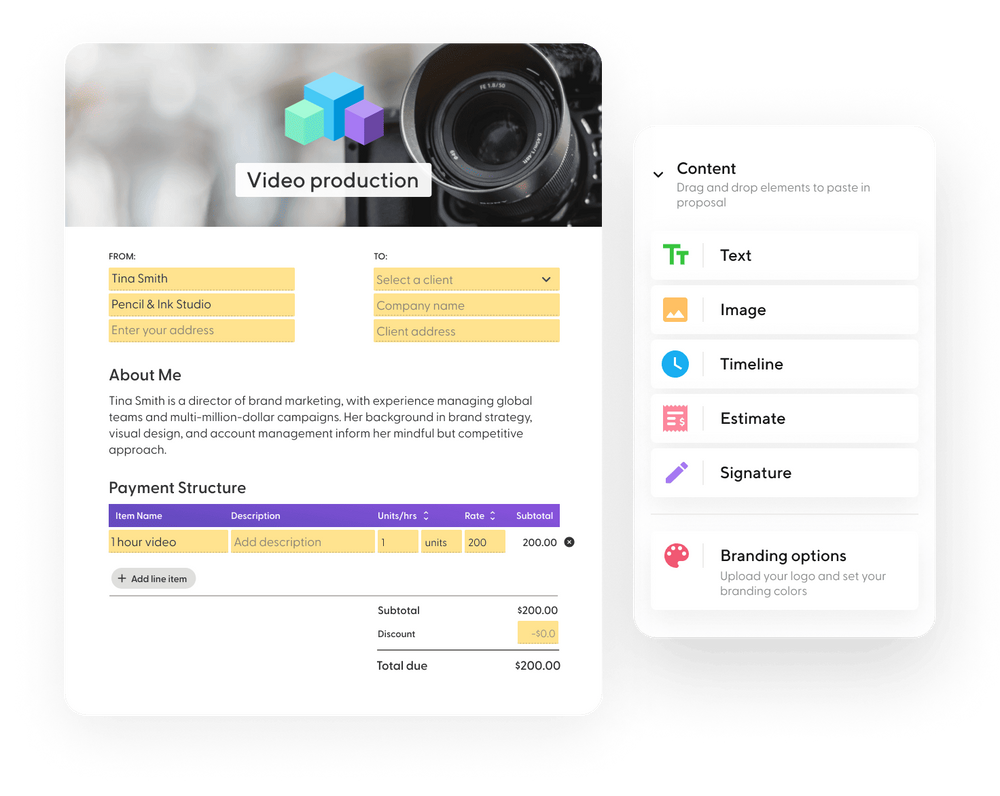Market research proposals aren’t as simple as they may seem. Maybe you’re struggling to write your market research proposal, or simply want to make your proposal become even stronger.
Content marketing, especially for a freelancer, can be broken down into a digestible science, and there are several components that will make your market research proposal truly great.
As long as your proposal includes these four elements at the very least, consider yourself good to go.
Not sure how to write them? We’ll break down everything you could possibly need to make your market research proposal great.
How to Structure your Marketing Proposal
A marketing proposal has many different components that need to be considered regardless of the goals. From your proposal, a client needs to understand:
- What are the goals and objectives of the engagement?
- What work is going to be done?
- When is everything going to be done?
- How much is it going to cost?
In this guide, we’ll cover all of these different facets of a marketing services or marketing research proposal outline and what you should be thinking about when putting together a proposal that will close.
Overview & Goals
Take the time to truly understand what your client is looking for and how you’re able to support them. Get to the specifics of what they’re trying to accomplish.
Think about what you hope to gain from your research, and furthermore, determine why this research is important. Who does it impact? Why are you the perfect person to conduct this project?
In marketing, your goals could also include increasing brand visibility, increasing conversions, average order value, or overall revenue. Regardless of the goals, make sure you outline what you’re working toward as it will set up the rest of the pitch.
Scope of Work
Marketing is incredibly broad and can encompass many different areas. From digital marketing to traditional marketing, there are many different components of what you can work on. Highlight the main areas that you plan on executing.
The options below are only a few examples of what may be included within your digital marketing proposal. Whatever you decide to include within your scope, make sure that everything aligns back to your goals.
Digital Marketing
Digital marketing is one area that may be included in your marketing proposal. Determine which of your skillsets will best meet the client’s goals. Some examples of digital marketing areas may include SEO, PPC, social media, web design, and online content.
Outline whether you’ll be working on creating strategies or executing specific tactics. The scope of work is where you get as specific as possible on what you’ll be doing.
Traditional Marketing
If your client is less focused on online strategies, you can include different traditional marketing activities. These range from print media to billboards, trade shows, referrals, and partnerships.
These are less common marketing activities, but should still be considered depending on your client and their audience.
For Research, Provide Specifics of Your Approach
You may think that you’ve already covered your approach within the objective element, and you might be right. However, you want to have a separate section of your market research proposal within your SOW dedicated to the approach so that you can really hammer out the details.
Address items such as:
- What will be your specific methods of conducting research?
- Will you have focus groups? If so, how many?
- How many team members will you need, or can you do this alone?
Determine precisely what you’ll need and how you’ll be conducting it. The more specific you are, the more likely the client will be to hire you. They need someone to fit their needs, just as you need someone to fit yours. Address the tiniest of details here so both sides can determine a good fit.
Timeline
Once you know what you’re going to be pitching, the next step is determining a timeline. Some clients will come to you with a timeframe that they want, but other times you’ll need to provide a timeline of your own.
Be realistic about the amount of time something will take because this is your first step in building trust with your client and your ability to manage expectations.
Presenting a timeline can look like a content calendar, a physical timeline that shows the different deliverables mapped out against a calendar to visually see the dates, or a simple timeframe that says an estimated amount of time each area will take.
Pricing & Fees
“When money talks, there are few interruptions,” Herbert V. Prochnow claimed.
The cost of performing market research will be a key part of your proposal. This is where your client will likely pay the most attention, which means you’ve got to reel them in. The cost element is imperative for crafting a great proposal.
You deserve to be paid for your work, there’s no question about that. However, it’s important to consider what will be the most cost-effective way for you to be paid. Do you want to be paid hourly, paid upfront, or in staggered deposits? All of these are viable options.
Tiered Pricing
The larger your scope is, the more it’s going to cost. If you know your client is price-conscientious, consider creating a tiered system to your scope. This can be structured in a “good, better, best” model of what you would recommend that would help accomplish the client’s goals.
Type of Engagement
When putting together the pricing, determine what type of engagement makes the most sense for you and your client. This may be a retainer agreement, an hourly cost, or a project-based fee. This will impact how you structure your payment and how much to charge your client.
Expenses
Come up with your expense budget and know that part of this will be addressed in your objectives. Since your client will already be thinking about money, you can include this on the front page of your proposal, in your initial email, and so on.
Duration vs. Market Value
One large consideration when figuring out the pricing is thinking about how long the project will take to execute vs. how much the information is worth. Oftentimes clients will want to charge you a lower hourly rate but that doesn’t always account for the years of time you’ve spent building this expertise. Understand what the market rate for this type of work is and the potential ROI that it will bring the client.
One way of determining your rate is to consider your value as a full-time employee or the cost that it would be for them to hire a full-time employee for this type of role. Calculating this number backward can just give you additional information you can work off of.
Presenting Your Proposal
The more complicated your marketing proposal is, the more information you need to provide. The amount of information that’s included within the scope of work will influence how the proposal is delivered. This can be in a text format, presentation, or a simple email. It all depends on your client, your information, and what you think will close the deal.
If you’re looking for a simple template to create your proposal, we have you covered.




